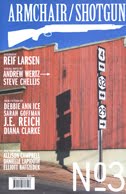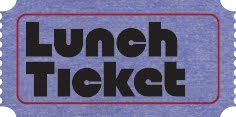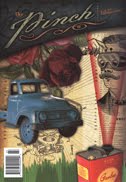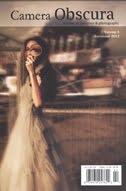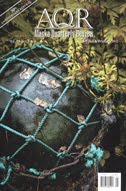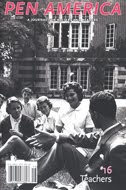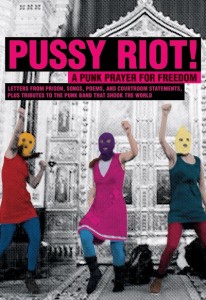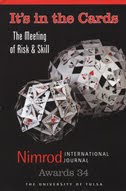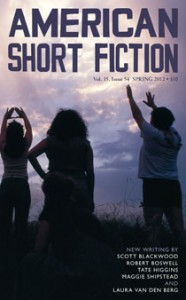Lunch Ticket is a new online biannual magazine that evokes “school, hanging with friends, having interesting discussions over bologna sandwiches.” The name comes from a program Antioch University Los Angeles used to have in which a new student would be paired with an experienced student for lunch and given a “lunch ticket.” Current Editor-in-Chief Lise Quintana says that since Antioch is one of the top 5 low-residency MFA programs in the country and didn’t have its own literary magazine, there was a clear need to start Lunch Ticket. “[It] exists both to showcase great literary talent and to support Antioch University Los Angeles’s mission of social justice,” Quintana says.
She says that you can expect to find “interviews with interesting and important authors (our premier issue had an interview with Natasha Trethewey, poet laureate of the United States), essays on social justice issues, and great writing by authors from all over.”
The staff are all current MFA students at Antioch. “We know what it’s like putting yourself out there,” says Quintana, “and we appreciate the support we’ve been shown.” The editors vary per issue, but currently the editor-in-chief is Quintana, the fiction editor is Kathleen Rohr, the Writing for Young People editor is Kristen Schroer, the creative nonfiction editor is Wendy Fontaine, the poetry editor is Janice Luo, and the art editor is Audrey Mandelbaum.
The first issue features interviews by Natasha Trethewey, Gregory Boyle, Rick Moody, and Francesca Lia Block; essays by Naomi Benaron and Nancy L. Conyers; fiction by Jennifer A. Orth-Veillon, Jessica Pitchford, Diana Payne, Kyle Hemmings, Jenny Dunning, Terry Sanville, and LaToya Watkins; creative nonfiction by Andy Johnson (nominated for a Pushcart Prize), Mark Brazaitis, Sion Dayson, and John Calderazzo; Writing for Young People by G. Neri; and poetry by Andrei Guruianu, Hugh Behm-Steinberg, James Valdis, Nate Pritts, Martin Ott and John F. Buckley, Sheila Black, George Bishop, Yim Tang Wong, R L Swihart, Derek Pollard, Eleanor Levine, Lois Marie Harrod, Dina Hardy, Ricky Garni, Valentina Cano, and Gabriel Cabrera.
In the future, the staff would like “a more ambitious art section, incorporating more writing about art.” The would also like to create a best-of anthology as a print-on-demand hardcopy book.
The current reading period ends at the end of this month and is reopened in March, although writers and artists can send their submissions at any time. Submissions can be sent through Submittable.

